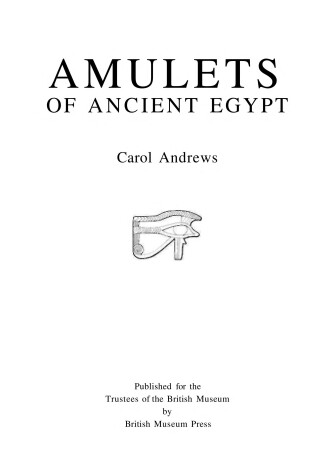Amulets are ornaments believed to endow the wearer by magical means with the properties they represent. They were first made in Egypt as early as 4000 BC and were essential adornments for both the living and the dead. Crafted from gold and silver, semiprecious stones, and less valuable materials, they are fine examples of Egyptian art as well as a source of evidence for religious beliefs. In this book, Carol Andrews offers the first comprehensive account of the types of amulets made, their symbolism, and their protective powers. An amuletic foot could be worn to ensure fleetness of foot, a hand for dexterity. The desert-dwelling hare symbolized keenness of the senses, and the hedgehog, which hibernated and survived outside the fertile valley, held connotations of rebirth and triumph over death itself. The ubiquitous amulet in the shape of the dung beetle, known as a scarab, was symbolic of new life. Amulets in the image of powerful gods would be worn for protection, and malevolent creatures, like the male hippopotamus, would be worn to ward off the evil they represented. Both a reference book and an informative account of Egyptian magical belief, this is the most complete survey of the subject to date.
- ISBN10 0714109762
- ISBN13 9780714109763
- Publish Date May 1994 (first published 1 January 1994)
- Publish Status Out of Print
- Out of Print 16 March 2001
- Publish Country GB
- Imprint British Museum Press
- Format Paperback
- Pages 128
- Language English
